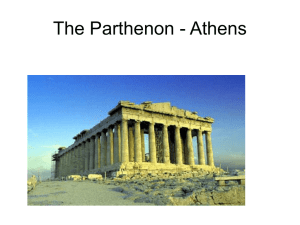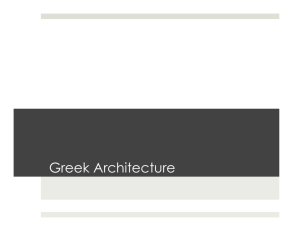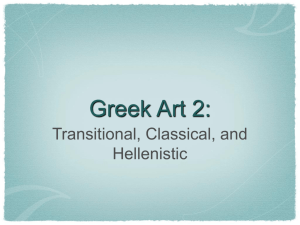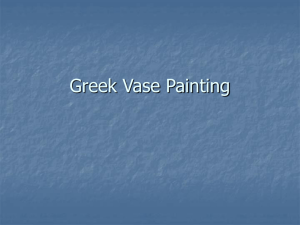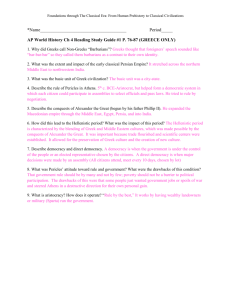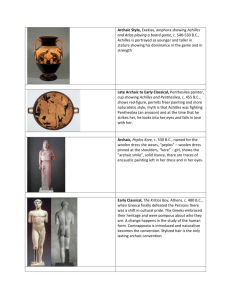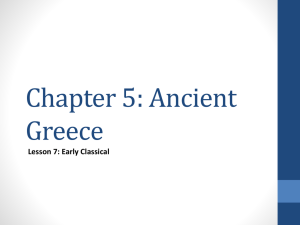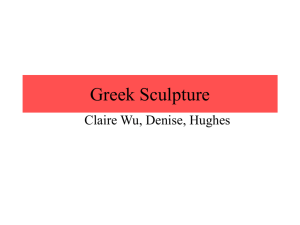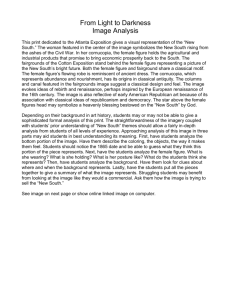Chapter 5 ART OF ANCIENT GREECE REVISED
advertisement
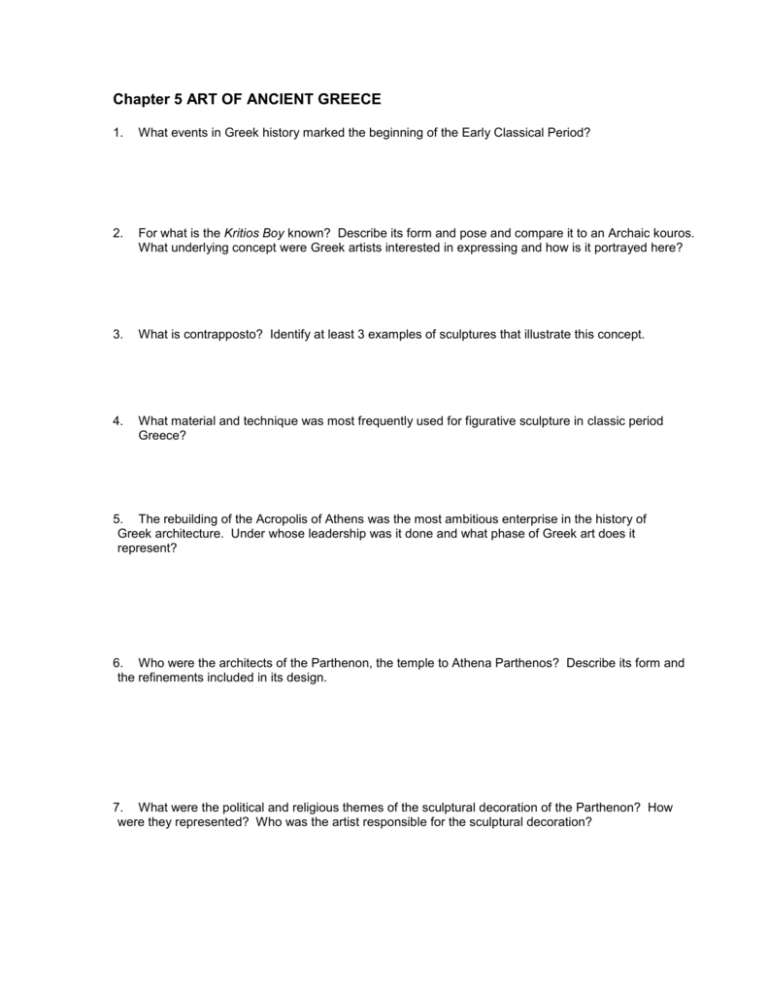
Chapter 5 ART OF ANCIENT GREECE 1. What events in Greek history marked the beginning of the Early Classical Period? 2. For what is the Kritios Boy known? Describe its form and pose and compare it to an Archaic kouros. What underlying concept were Greek artists interested in expressing and how is it portrayed here? 3. What is contrapposto? Identify at least 3 examples of sculptures that illustrate this concept. 4. What material and technique was most frequently used for figurative sculpture in classic period Greece? 5. The rebuilding of the Acropolis of Athens was the most ambitious enterprise in the history of Greek architecture. Under whose leadership was it done and what phase of Greek art does it represent? 6. Who were the architects of the Parthenon, the temple to Athena Parthenos? Describe its form and the refinements included in its design. 7. What were the political and religious themes of the sculptural decoration of the Parthenon? How were they represented? Who was the artist responsible for the sculptural decoration? 8. What does “acropolis” mean and where is one found? 9. What sculpture embodied the Classical ideal of human beauty and who was the sculptor? What else is he famous for? What philosophy reflects this quest for the ideal? 10. What is “wet drapery”? Give an example of a sculpture that has this. 11. Explain how the Three Goddesses from the pediment of the Parthenon embodies the visual changes evident during the High Classical period. 8. Describe the Propylaia, the main entrance to the Acropolis at Athens. 9 . How is the Porch of the Maidens on the Erechtheum an example of High Classical art? 10. In what ways is the sculpture on the Temple of Athena Nike a hint at the future developments in Late Classical art? 11. What events mark the end of the Classical Period? Who was responsible for this? 12. Who were the sculptors that dominated the Late Classical period and for what is each known? 13. What new subjects or themes were introduced during the Late Classical period? How is this different from art during the Early and High Classical? 14. Describe the Aphrodite of Knidos, why was/is this sculpture so famous? 15. What is meant by “mosaic” and “tesserae,” and where might they be found? Provide an example of a work of art made by this process. 16. How did the Hellenistic period begin? What events led to this? 17. How does the Hellenistic artistic vision differ from the art of the Classical era? 18. In the frieze on the Altar of Zeus from Pergamon, what was the subject depicted, and what did it symbolize? 19. What are some of the classical elements in the Altar of Zeus and what is unique or different? 21. What are the stylistic characteristics that identify the Nike of Samothrace as a Hellenistic sculpture? 21. Describe the Laocoon sculpture. What story does it relate to and how is the drama and anguish of the theme captured? What devices were used to emphasize them?

